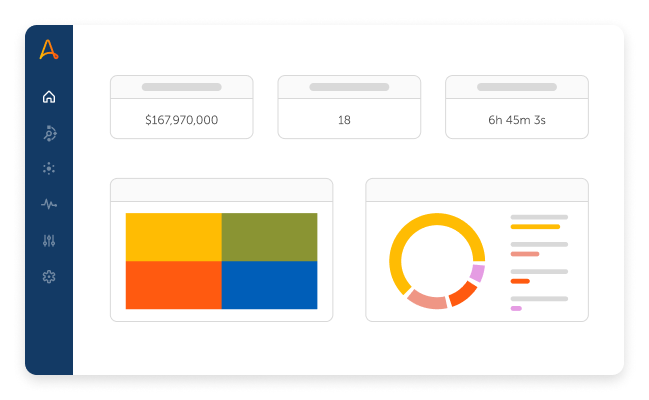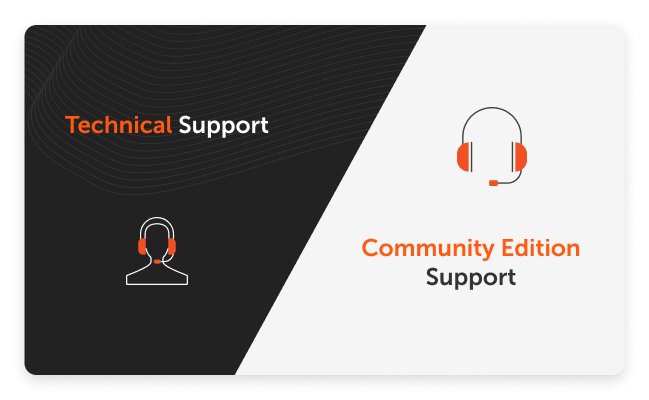As a business owner, problems with forecasting, inventory tracking and order fulfillment can eat into your bottom line and reduce profitability. Manufacturers need more granular control, more real time inventory data and greater transparency to streamline their business processes.
For modern businesses, ecommerce to multinational corporations, automated inventory control systems using technologies such as RPA (Robotic Process Automation) are quickly becoming the answer. Automating when possible across manufacturing, delivery, and after sales can speed up the efficiency of supply chain management. Especially with intelligent automation, RPA is the transparency and control needed to make manufacturing magic.
What are the benefits of automated inventory management?
You don't have to be Amazon to benefit from automated inventory management. While the internet retail giant is the peak of automation, with robotic order fulfillment and automation of entire swaths of their customer facing operation, it is very easy to profit from easy-to-use, cloud-based automation. It can be quite cost effective for companies of all sizes to automate their multichannel supply chain management, including inventory management and other repetitive processes.
Savings of Time and Capital
Inventory management is a complicated proposition, with many moving parts and time-consuming processes. Traditional inventory management software only increases productivity so much. By Automating interactions in legacy software, you can save time with automated inventory controls and save money with cloud-based automation solutions.
Employee Satisfaction / Retention
RPA can simplify and automate inventory spreadsheets, as well as augment decisions with real-time data and instant alerts. This allows humans to spend less time on manual inventories and more time finding new ways to increase value for your organization. For example, NSG Group has saved over 13,500 hours spent on such manual activities with RPA.
Inventory Forecasting and Control
Predict Revenue Shortfall From Demand and Inventory, a prebuilt bot available in our Bot Store, can supercharge warehouse management. It allows you to automate functions like reorders and forecasting while preventing overstocks and stockouts. Automatically adjust for seasonal or volatile data and pinpoint stock needs to maximize your profitability.
Streamline Warehouse Operations
Track inventory from production through shipping and automate your inventories using RFID inventory counts over barcodes and barcode scanning. RPA allows you to automatically sync inventory data between disparate systems and create real-time alerts for any issues in the supply chain.
Enhanced Customer Satisfaction
Keep your customers up to date on their inventories using live push notifications and interact with customer-facing apps and AI driven support options.
Faster Response Times/Fewer Mistakes
RPA and IA help your supply chain respond to unforeseen increases in demand, so your company isn’t caught off balance, as this medical manufacturer experienced. As well, layering processes into your end-to-end automation solution reduces the number of mistakes quick turn-around times can cause.

Revolutionize your inventory management and business processes
RPA delivers real-time data analytics to help enhance agility and improve critical decision-making.
Request demoWho can benefit from automated inventory management systems?
An automated inventory management solution tracks everything from product and vendor information to product quantities, sales data, and inventory movements. These benefits affect not only your inventory control team but your entire company.
Customer Service
RPA enables contact centers to quickly and accurately answer customer inquiries, address concerns and provide up-to-date information about transactions. Chatbots supplement CSRs with lower level questions and concerns, reducing backlog.
Warehousing
Use RPA, geofencing and AI to count and track inventory items, automate production orders, keep stock information up-to-date in real-time, and inform coordinators ahead of time of sourcing issues.
Inventory Endpoints / Retailers
Reduce manual inventory times by automating counts with RFID. Automating your inventory management system will increase employee satisfaction, retention and reduce the need for extra employees when you scale your operations.
Manufacturers
RPA and IA can position you to take advantage of JIT (Just In Time) production. The ability to forecast accurately and automate processes allows you to run lean operations and only hold what is needed for short-term production.
Stanley Black & Decker Using RPA to achieve $22 Billion in revenue by 2022.
Customer Story

Our corporate goal is to reach $22 billion of revenue by the year 2022. The only way to scale that much is to do things better. Automation is allowing us to do that.
$3.4M
savings in 2018
26
bots in production
1500+
journal entries at monthly close
How automated inventory management can help your organization?
Automating your inventory management system can have end-to-end streamlining effects on many parts of your business, from supply chain to the post of sale. Knowing where your inventory is, how much of it you have, and how much you're going to need in the near future is paramount to maintaining your profitability.
Robotic process automation in inventory management can bring modernization to other areas, such as:
Inventory Control and Tracking
- Augment inventory counts and speed them up exponentially
- Reduce Count Errors
- Track Inventory Locations
- Monitor inventory levels
Forecasting and Ordering
- Prevent inventory shortages and overages
- Automate ordering of new inventory
- Forecast inventory needs in real-time
- Adjust forecasting on the fly as new data is integrated
Manufacturing Coordination
- monitor parts inventories to prevent shortages
- Automatic reorder of parts as needed for the manufacture
- Coordinate flow of parts for manufacture
- Provide accurate data for MRP (Materials Requirement Planning)
Customer Facing Portals
- Automated customer service and issue tracking
- Dynamic customer education portals
- Real-time push notifications
- Sales Portals supported by AI
What should I look for in an automated inventory management solution?

Power, flexibility, and ease of use are key in choosing an automated inventory management system. Automation Anywhere's RPA gives you all of these and more; providing scalable, cloud-based power, the flexibility to interface with and pull information from different systems and sources, and a drag-and-drop interface that allows virtually anyone to build robust digital robots. Our system works with legacy software, APIs, and can even pull information from web forms, integrating systems that would otherwise remain separate.
Document processing using AI (artificial intelligence) and OCR (optical character recognition) can extract information from shipping and other inventory paperwork to update inventory levels automatically, to be compared to an automated inventory count using RFID. This information can provide redundancy and limit errors in stock replenishment.

How to get started with automated inventory management?
Contact our experienced, in-house automation professionals and they can provide you with a demonstration of how automated inventory management can help you and your unique needs.
Request demoMore automated inventory management resources.
Get to know the Agentic Process Automation System.

For Students & Developers
Start automating instantly with FREE access to full-featured automation with Cloud Community Edition.



